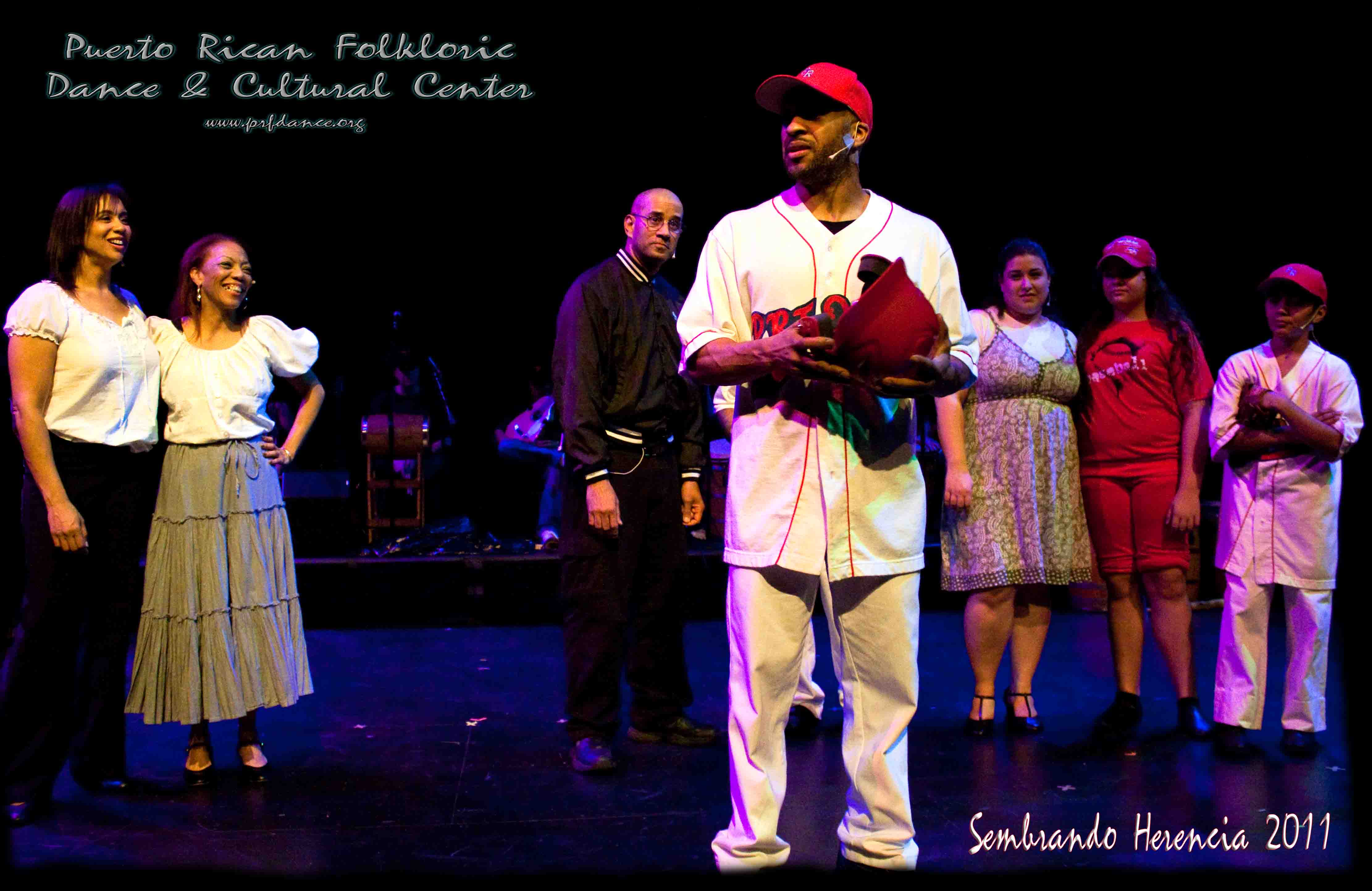


On December 4, 2011, Puerto Rican Folkloric Dance debuted our 8th original musical, Boricua Beisbol, the story of Emilio, the choices he faced, and the inspiring advisors who appeared in unexpected places to help him. Boricua Beisbol, written in Tekina-eirĂşnard's unmistakeable style filled with joy, adventure, and magic, combined live music, dance, and theater, to take our audience on a journey through defining moments in the history of baseball and the people of Puerto Rico. Each year, Sembrando Herencia seeds an awareness of often-forgotten elements from Puerto Rico's rich heritage--bringing history to life for both the audience and the dancers, musicians, and performing arts students who share in the experience. Our 8th annual production, Boricua Beisbol, was written by PRFDance Director Ana Maria Tekina-eiru' Maynard and was produced in collaboration with Rupert Reyes, Director of Teatro Vivo, baseball aficionado Edwin Baez, and sports author Jeff Katz who provided research direction in the early months of story development.
The first Puerto Rican baseball league was formed in 1901, with six teams. In 1918 the Puerto Rican Baseball Association was formed. By that time there were teams from the US and Cuba who would come to play in Puerto Rico during the winter off season (Nov, Dec, Jan), to keep in practice or improve. Players in the US began choosing Puerto RicoÂ’s Winter League to play due to its competitive level and warm climate during the winter, a custom that has continued until the current decade.
In the early days, there were no Latino Ball Players in Major League Baseball. By the 1880s Black players formed their own professional leagues because they likewise were not accepted into the major or minor leagues. The Negro leagues preferred playing in Puerto Rico (vs Stateside) due to lack of racism towards the players. Fans greeted them after the game with smiles and a handshake. It wasnÂ’t until 1947 that Jackie Robinson would become the first black player to play in the Major Leagues.
In 1938, The Liga de BĂ©bol Semiprofesional de Puerto Rico (LBSPR) was founded as a semi-professional league. The original six clubs were the Criollos de Caguas, Grises Orientales de Humacao, Indios de MayagĂĽiratas KofresĂe Ponce, Senadores de San Juan and the Venerables de Guayama. In 1939, the Tiburones de Aguadilla and the Cangrejeros de Santurce were added. The Winter League became an opportunity for local talent to be discovered by major league baseball Scouts. Here are some Puerto Rican baseball firsts we enjoy in our musical.
Puerto Ricans have always taken their Baseball very seriously. In the early days, people would write songs for their teams, and when the teams would go to play in other towns, their fans would go on the train with them to support them! Puerto Rico's historic and most beloved steam engine train, La Maquina, ran from San Juan to Ponce (thru Mayaguez) from the late 19th century until the 1950s. Before the days of interstate highways, this was the only means of transportation around the Island. Puerto Rico's Highway #2 which traces La Maquina's route was not built until 1953. Before La Maquina, it took several days by horse and wagon to travel from San Juan to Ponce. La Maquina cut travel time to an approximate and unpredictable 10 hours! A big cow on the track could mean a big delay! For a small island, Puerto Rico has had a fascinating history.
Hope you have enjoyed this tiny snapshot of Puerto Rico's rich history!
